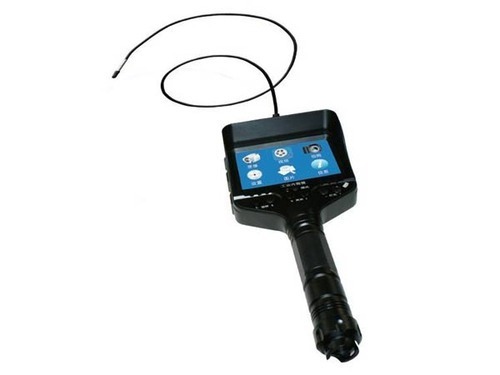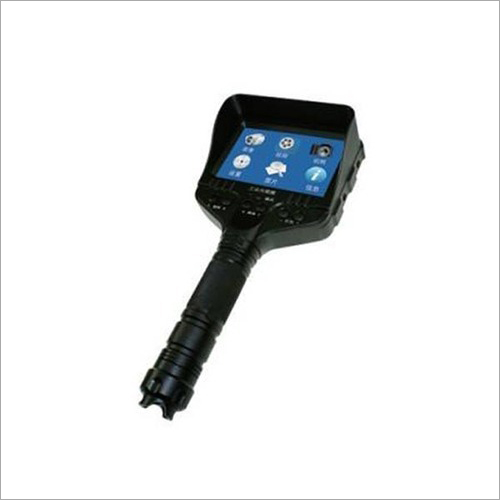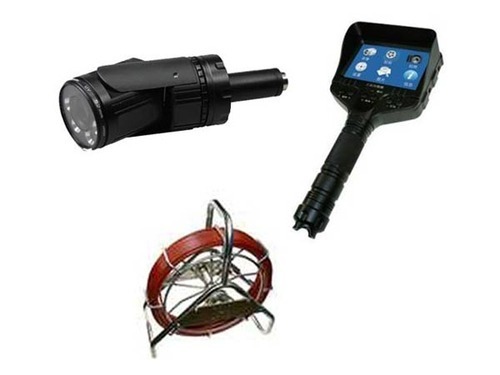Pipeline Endoscope
Product Details:
- Temperature 10-50 Celsius (oC)
- Power Supply Electric
- Color Black
- Usage Industrial
- Product Type Pipeline Endoscope
- Click to View more
X
Pipeline Endoscope Price And Quantity
- 1 Piece
Pipeline Endoscope Product Specifications
- Electric
- 10-50 Celsius (oC)
- Black
- Industrial
- Pipeline Endoscope
Pipeline Endoscope Trade Information
- 1-7 Days
Product Description
A pipeline endoscope, also known as a pipeline inspection camera or sewer inspection camera, is a specialized tool used for inspecting the interior of pipes, conduits, and other cylindrical structures. These devices are commonly used in industries such as plumbing, construction, civil engineering, and municipal maintenance to assess the condition of pipelines without the need for costly and disruptive excavation.
Here are some key features and components of a typical pipeline endoscope:
1. Camera Head: The camera head is the most critical component of the endoscope. It usually contains a high-resolution camera equipped with LED lights to illuminate the interior of the pipeline. The camera head may be mounted on a flexible cable or rigid rod, depending on the specific design of the endoscope.
2. Flexible Cable or Rigid Rod: The camera head is connected to either a flexible cable or a rigid rod that allows it to be inserted into the pipeline. Flexible cables are more versatile and can navigate through bends and curves in the pipeline, while rigid rods provide greater stability and control in straight sections.
3. Lighting System: LED lights built into the camera head illuminate the interior of the pipeline, allowing the camera to capture clear images and videos even in dark environments.
4. Control Unit: The control unit is usually located outside the pipeline and is used to operate the endoscope. It may include features such as a display screen for real-time viewing of the inspection footage, controls for adjusting camera settings and lighting, and recording capabilities to capture images and videos for later analysis.
5. Power Source: Pipeline endoscopes are typically powered by rechargeable batteries or through a wired connection to an external power source. Battery-powered endoscopes offer greater portability and flexibility, while wired models may provide longer continuous operation times.
6. Accessories: Depending on the specific application, pipeline endoscopes may come with a variety of accessories such as interchangeable camera heads with different viewing angles, extension cables for reaching deeper into pipelines, and cleaning tools to remove debris and obstructions.
Pipeline Endoscope Applications:
1. Plumbing and Drain Inspection: Pipeline endoscopes are commonly used by plumbers to inspect residential, commercial, and industrial drainage systems. They can identify blockages, leaks, corrosion, and other issues affecting the functionality of pipes and drains without the need for extensive excavation or disruption to the property.
2. Municipal Sewer and Stormwater Inspection: Municipalities use pipeline endoscopes to inspect sewer lines, stormwater drains, and other underground infrastructure. Regular inspections help identify problems such as root intrusion, cracks, joint displacement, and sediment buildup, allowing for timely maintenance and repairs to prevent sewage backups and flooding.
3. Civil Engineering and Construction: Pipeline endoscopes are employed during the construction and maintenance of civil engineering projects such as bridges, tunnels, and underground utilities. They can assess the condition of newly installed pipes, verify proper installation, and detect any defects or damage before they compromise the integrity of the structure.
4. Industrial Pipelines: In industrial settings, pipeline endoscopes are used to inspect process pipelines, including those in chemical plants, refineries, and power plants. These inspections help ensure compliance with safety regulations, identify potential hazards such as leaks or corrosion, and prevent costly production downtime.
5. Oil and Gas Pipelines: Pipeline endoscopes are utilized in the oil and gas industry to inspect pipelines for corrosion, erosion, weld defects, and other integrity threats. Regular inspections are essential for ensuring the safe and efficient transportation of oil and gas products and for complying with regulatory requirements.
6. HVAC and Ventilation Systems: Building maintenance professionals use pipeline endoscopes to inspect HVAC ductwork, ventilation systems, and air handling units. These inspections help identify blockages, mold growth, and other issues affecting indoor air quality and HVAC system performance.
7. Aerospace and Automotive Industries: Pipeline endoscopes are also used in the aerospace and automotive industries for inspecting fuel lines, hydraulic systems, and other critical components. They can detect defects, foreign object debris (FOD), and other anomalies that could compromise the safety and reliability of aircraft and vehicles.
Tell us about your requirement

Price:
Quantity
Select Unit
- 50
- 100
- 200
- 250
- 500
- 1000+
Additional detail
Mobile number
Email
 English
English Spanish
Spanish French
French German
German Italian
Italian Chinese (Simplified)
Chinese (Simplified) Japanese
Japanese Korean
Korean Arabic
Arabic Portuguese
Portuguese






 Call Me Free
Call Me Free
